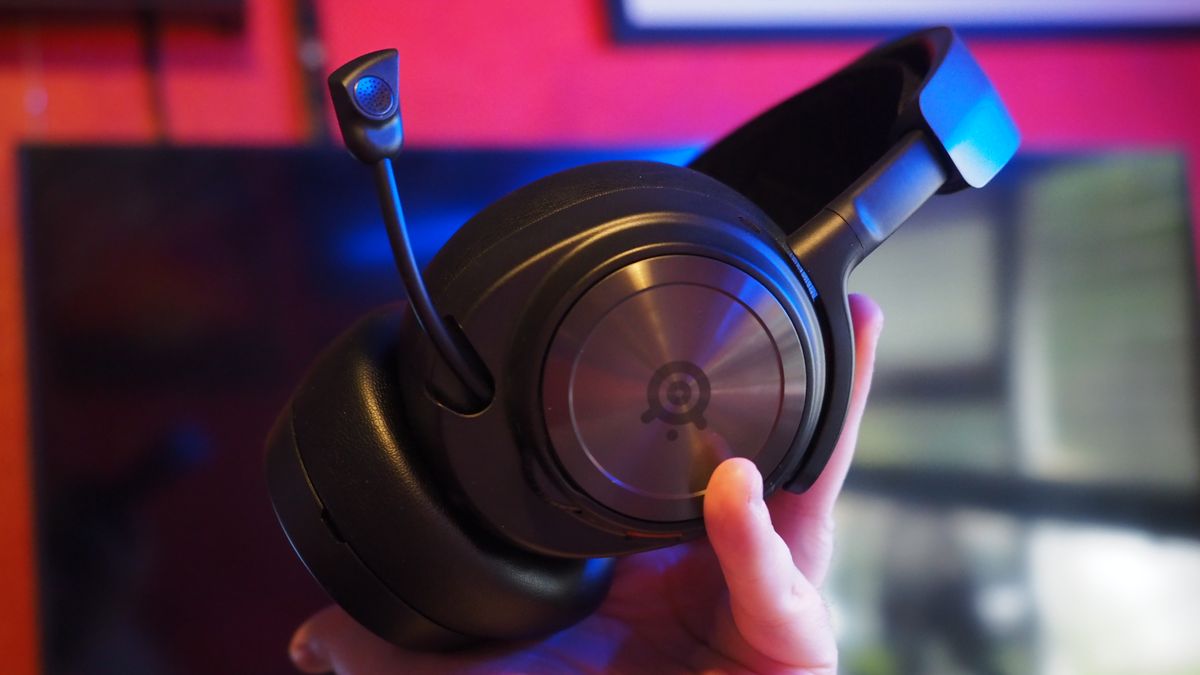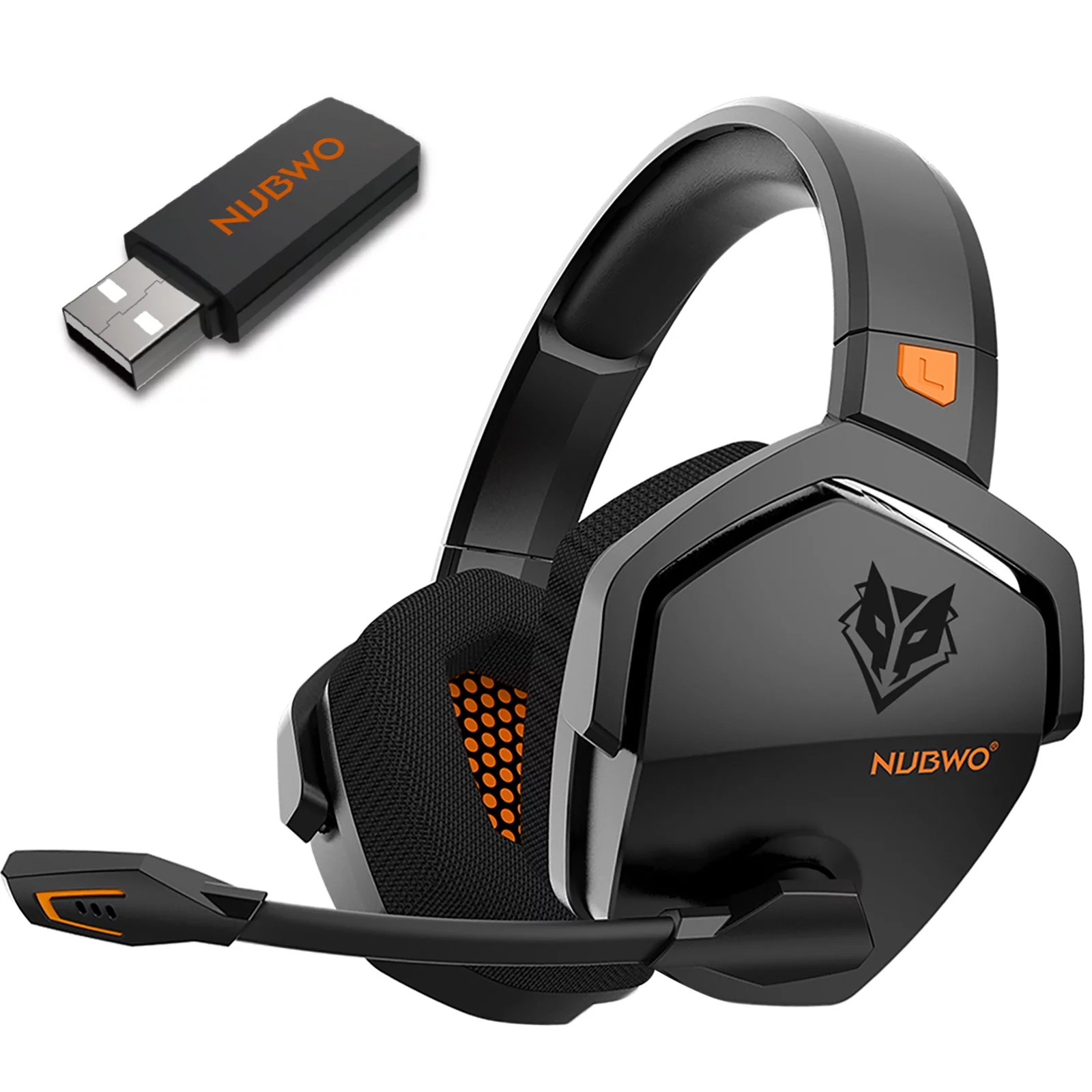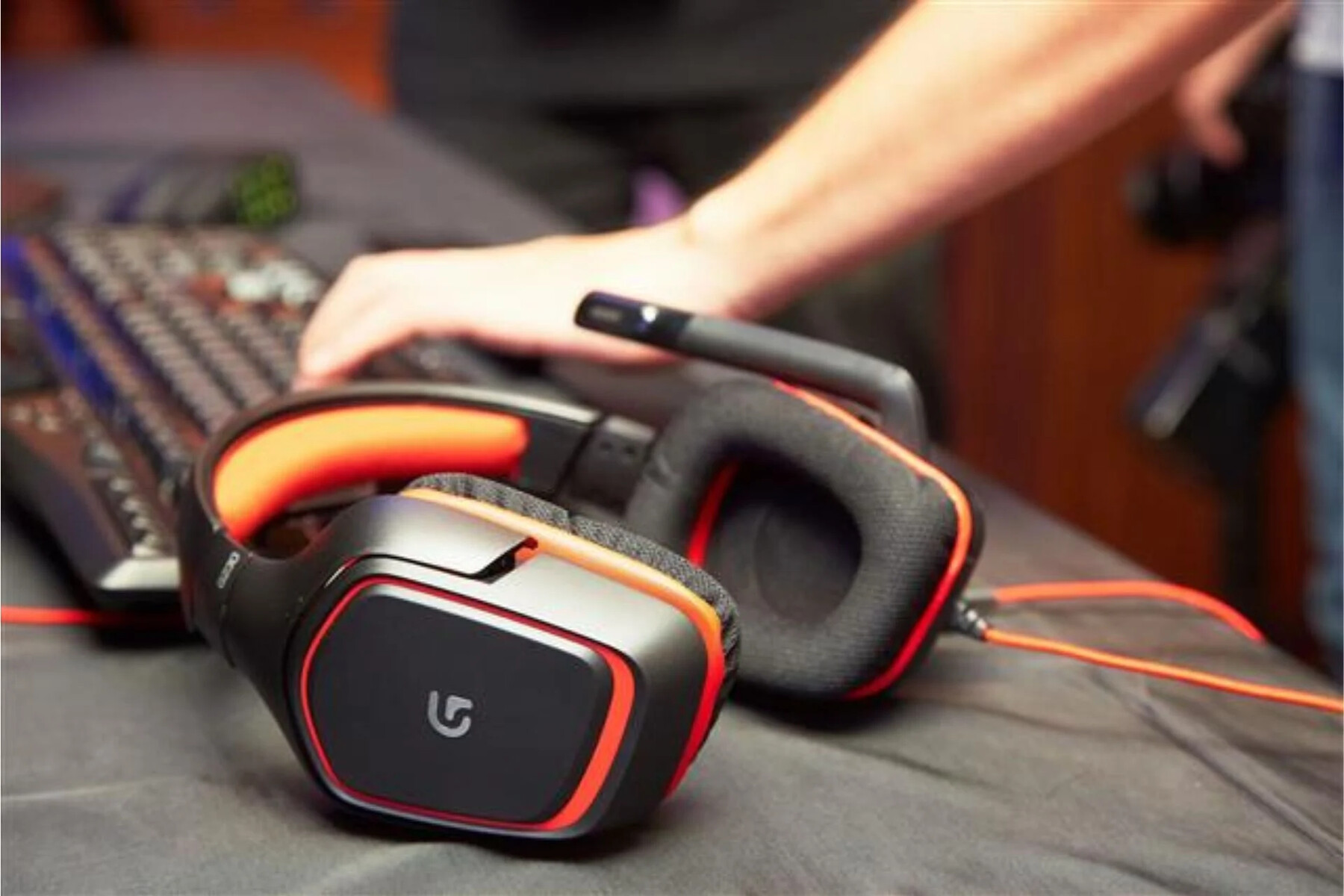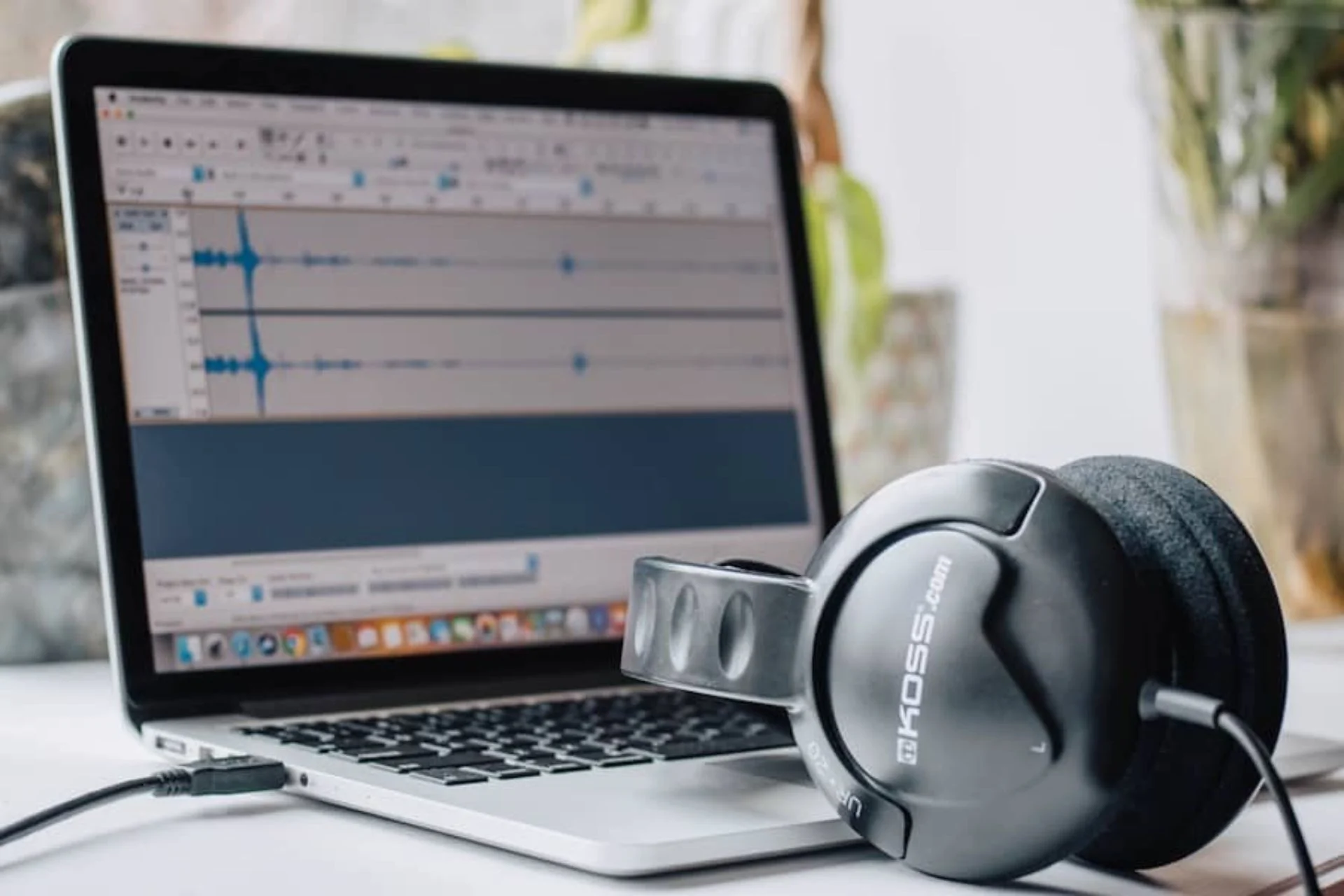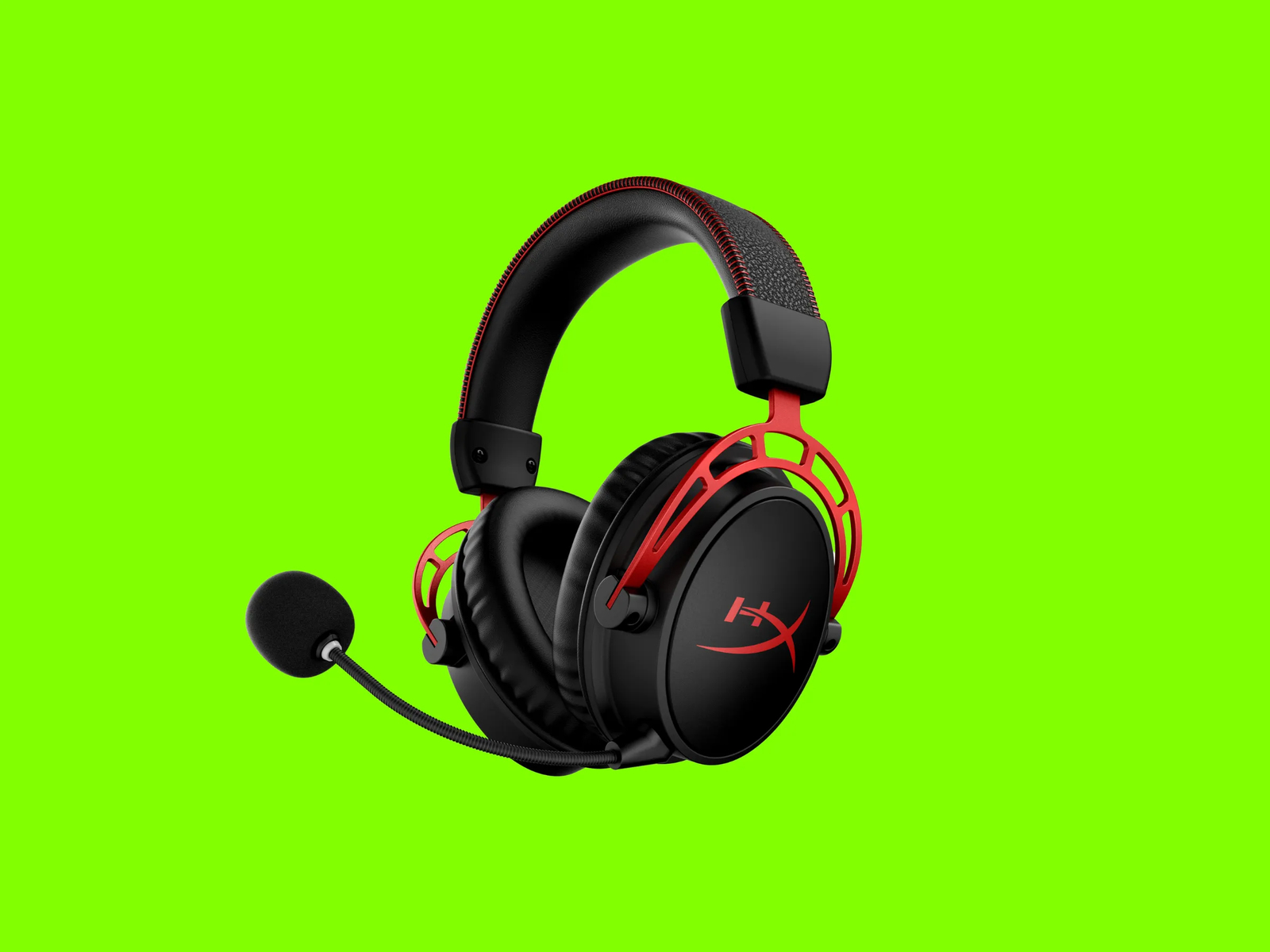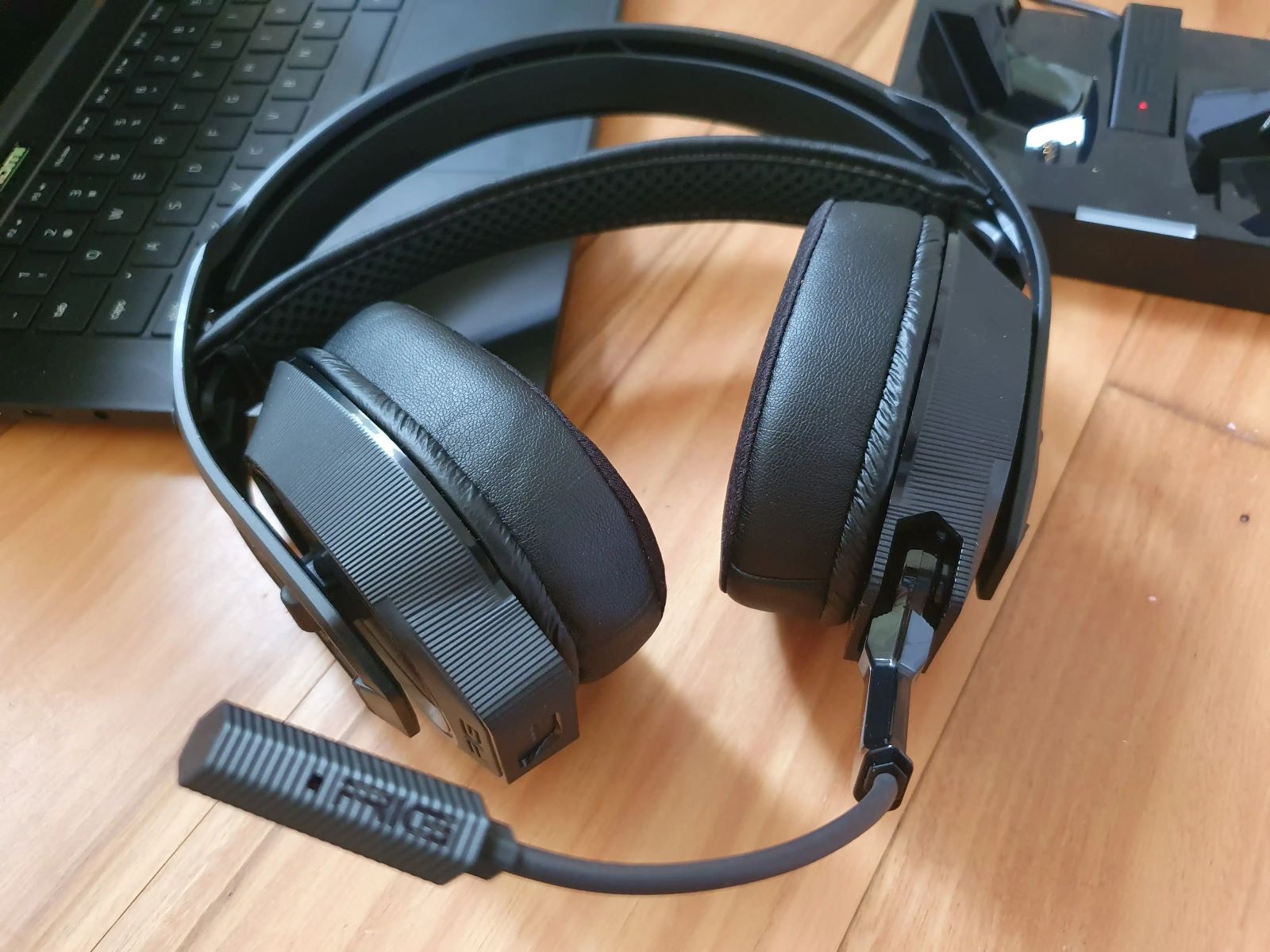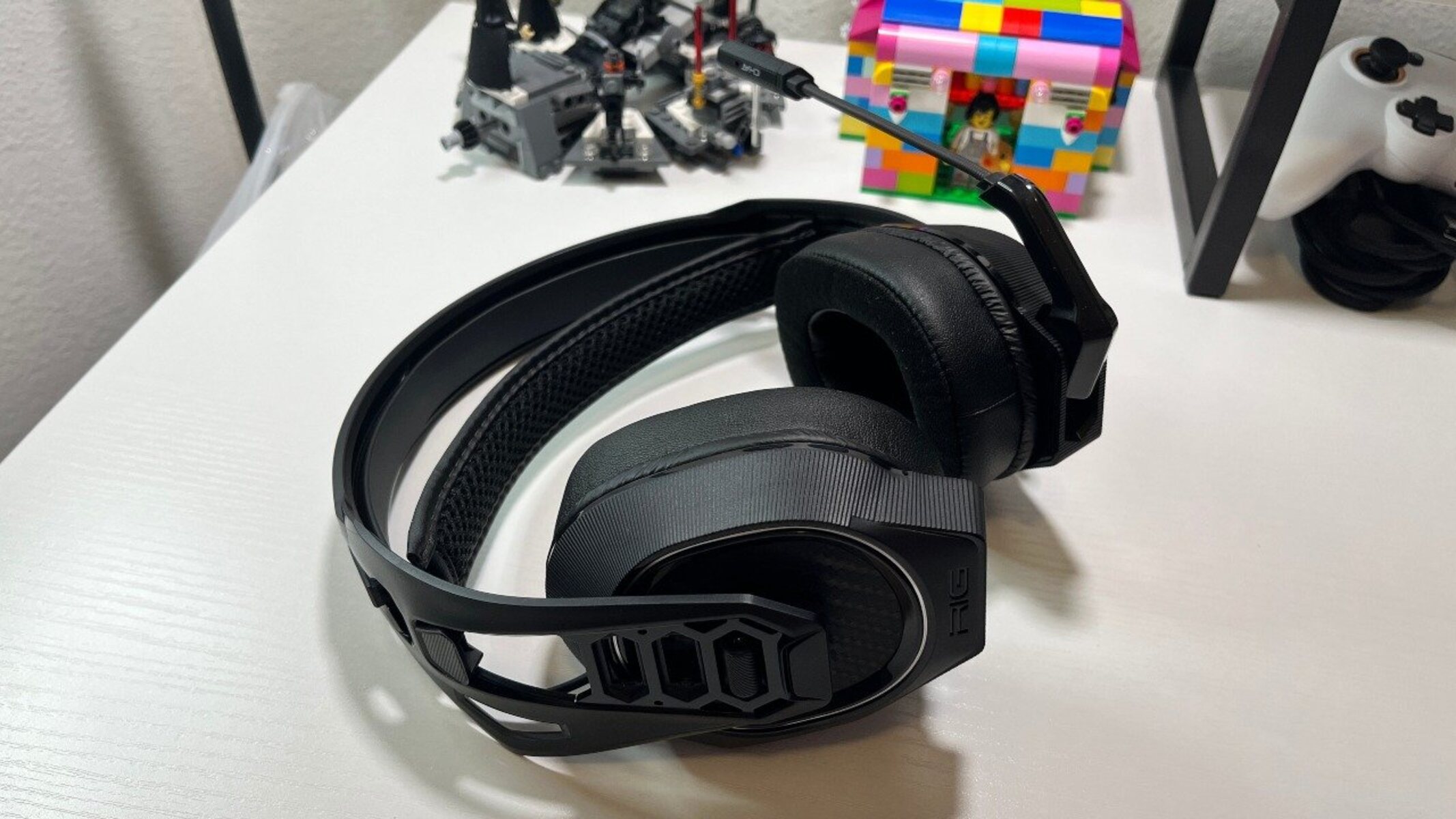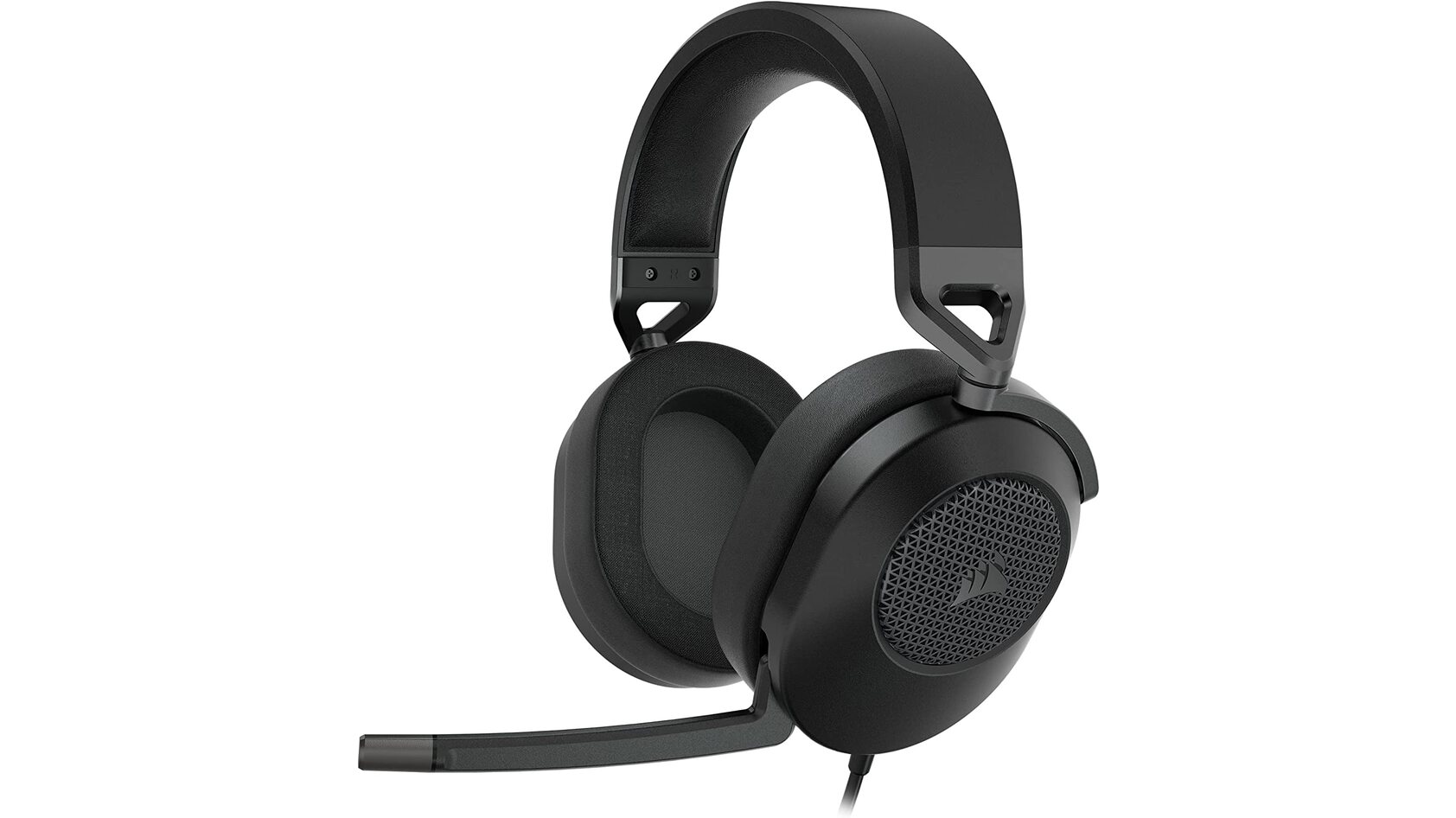Introduction
Setting up and configuring your headset microphone is a crucial aspect of maximizing your audio experience, whether you're engaging in virtual meetings, gaming, or recording audio. A well-configured headset microphone ensures that your voice is clear and crisp, allowing you to communicate effectively and enjoy immersive sound quality. This comprehensive guide will walk you through the process of configuring and optimizing your headset microphone, empowering you to unleash its full potential.
Understanding the intricacies of mic configuration is essential for harnessing the true power of your headset microphone. By familiarizing yourself with the various settings and connection options, you can tailor the microphone to suit your specific needs, whether it's for online communication, streaming, or content creation.
Connecting your headset microphone to your device is the first step in the configuration process. This involves identifying the appropriate ports on your computer or gaming console and ensuring a secure connection. Understanding the different connection types, such as USB or audio jacks, will enable you to seamlessly integrate your headset microphone into your setup.
Once connected, adjusting the mic settings is paramount for achieving optimal audio performance. Fine-tuning elements such as input volume, sensitivity, and noise cancellation can significantly enhance the clarity and precision of your voice, creating a more immersive experience for both you and your audience.
Testing your headset microphone after configuration is crucial to ensure that it's functioning as intended. By conducting a test recording or using built-in audio tools, you can verify the quality of your audio input and make any necessary adjustments to further refine the settings.
In the event of mic issues, troubleshooting becomes a valuable skill. Understanding common problems such as static, low volume, or connectivity issues equips you with the knowledge to swiftly address and resolve these issues, ensuring uninterrupted communication and seamless audio performance.
By delving into each of these aspects, you'll gain a comprehensive understanding of mic configuration, empowering you to optimize your headset microphone for a wide range of applications. Whether you're a professional seeking crystal-clear audio for virtual meetings or a gaming enthusiast aiming for immersive sound, mastering the art of mic configuration is the key to unlocking the full potential of your headset microphone.
Understanding Mic Configuration
Understanding mic configuration is pivotal in unleashing the full potential of your headset microphone. It involves familiarizing yourself with the intricate settings and connection options, allowing you to tailor the microphone to suit your specific needs. Whether you are engaging in virtual meetings, gaming, or content creation, a well-configured headset microphone is essential for clear and immersive audio experiences.
Mic configuration encompasses a range of settings that directly impact the performance of your headset microphone. These settings typically include input volume, sensitivity, noise cancellation, and equalization. By comprehending the nuances of each setting, you can effectively optimize your microphone to capture your voice with precision and clarity.
In addition to settings, understanding the various connection options is vital for seamlessly integrating your headset microphone into your setup. Headset microphones commonly utilize USB or audio jack connections, each offering distinct advantages. USB connections provide digital audio transmission, often accompanied by built-in sound processing features, while audio jack connections offer simplicity and compatibility with a wide range of devices.
Furthermore, it's essential to consider the compatibility of your headset microphone with different devices. Whether you are using a computer, gaming console, or mobile device, ensuring that your microphone is compatible with the intended device is crucial for a seamless and hassle-free user experience.
Moreover, understanding the directional properties of your headset microphone is key to optimizing its performance. Some microphones offer adjustable directional settings, such as cardioid, omnidirectional, or bidirectional modes. Familiarizing yourself with these options allows you to tailor the microphone's pickup pattern to suit specific recording or communication scenarios.
By delving into the intricacies of mic configuration, you gain the knowledge and skills to harness the full capabilities of your headset microphone. Whether it's adjusting settings for optimal voice capture, selecting the appropriate connection type, or leveraging directional properties, understanding mic configuration empowers you to elevate your audio experiences across various applications.
In summary, understanding mic configuration involves mastering the settings, connection options, compatibility considerations, and directional properties of your headset microphone. This knowledge forms the foundation for effectively optimizing your microphone to deliver exceptional audio performance, whether for professional communication, gaming, content creation, or immersive entertainment experiences.
Connecting Your Headset Microphone
Connecting your headset microphone to your device is the crucial first step in the configuration process. The method of connection largely depends on the type of headset microphone you have and the device you intend to use it with. Here's a detailed look at the various connection options and the steps to establish a secure and reliable connection for optimal performance.
Wired Headset Microphones
If you have a wired headset microphone, it typically comes with either a USB connector or a 3.5mm audio jack. When using a USB headset, simply locate an available USB port on your computer or gaming console and insert the USB connector. This type of connection offers digital audio transmission and may also provide additional features such as built-in sound processing.
For headset microphones with a 3.5mm audio jack, identify the corresponding audio input port on your device. This may be a dedicated microphone port, indicated by a microphone icon, or a combo port that supports both audio output and microphone input. Insert the 3.5mm connector into the appropriate port, ensuring a secure connection to prevent audio distortions or intermittent connectivity.
Wireless Headset Microphones
Wireless headset microphones typically utilize Bluetooth technology for seamless connectivity. To connect a wireless headset microphone, ensure that the Bluetooth feature is enabled on your device. Then, follow the manufacturer's instructions to pair the headset microphone with your device. Once paired, the wireless headset microphone will establish a stable connection, allowing you to enjoy the freedom of movement without being tethered by cables.
Compatibility Considerations
When connecting your headset microphone, it's essential to consider the compatibility of the device and the microphone. Ensure that the device supports the connection type of your headset microphone, whether it's USB, 3.5mm audio jack, or Bluetooth. Additionally, check for any specific driver requirements or software updates that may be necessary to optimize the performance of your headset microphone on the intended device.
Securing the Connection
Regardless of the connection type, it's crucial to secure the connection between your headset microphone and the device. A loose or unstable connection can lead to audio issues, including intermittent signal loss or distorted sound. After connecting the headset microphone, gently tug on the cable or check the Bluetooth status to ensure a stable and reliable connection.
By following these steps and considerations, you can confidently connect your headset microphone to your device, setting the stage for the subsequent adjustments and optimizations to enhance the audio performance of your headset microphone.
Adjusting Mic Settings
Adjusting the settings of your headset microphone is a crucial step in optimizing its performance to suit your specific needs and preferences. Whether you're aiming for crystal-clear voice capture during virtual meetings or immersive audio experiences while gaming, fine-tuning the mic settings can significantly enhance the overall audio quality. Here's an in-depth look at the key mic settings and the adjustments you can make to achieve the desired audio performance.
Input Volume
The input volume, also known as the microphone gain, determines the sensitivity of the microphone to sound. Adjusting the input volume allows you to control how loud or soft your voice is picked up by the microphone. It's essential to strike a balance – setting the input volume too high can result in distorted or clipped audio, while setting it too low may lead to a faint or indistinct voice capture. Experiment with different input volume levels to find the sweet spot where your voice is captured clearly without distortion.
Sensitivity
Mic sensitivity refers to how responsive the microphone is to sound. Some headset microphones feature adjustable sensitivity settings, allowing you to fine-tune the microphone's responsiveness based on your environment and speaking volume. Higher sensitivity settings can capture subtle nuances in your voice but may also pick up background noise, while lower sensitivity settings can help minimize ambient noise but may require speaking louder for clear voice capture. Adjust the sensitivity based on your specific usage scenario to achieve optimal voice clarity while minimizing unwanted noise.
Noise Cancellation
Many modern headset microphones incorporate noise cancellation features to reduce background noise and focus on capturing the user's voice. Adjusting the noise cancellation settings enables you to tailor the microphone's ability to filter out ambient sounds, such as keyboard typing, fan noise, or room reverberations. By finding the right balance between noise cancellation and voice capture, you can ensure that your voice comes through prominently without being overshadowed by environmental distractions.
Equalization
Some headset microphones offer equalization settings, allowing you to adjust the tonal characteristics of your voice. These settings may include options such as bass boost, treble enhancement, or customizable EQ presets. Experimenting with equalization settings can help you personalize the tonal profile of your voice, making it more vibrant and expressive, or adapting it to specific communication or recording requirements.
By adjusting these mic settings in accordance with your preferences and usage scenarios, you can unlock the full potential of your headset microphone, delivering clear, immersive, and professional-quality audio experiences across various applications. Fine-tuning the input volume, sensitivity, noise cancellation, and equalization settings empowers you to customize the microphone's performance to suit your unique audio needs, ensuring that your voice is captured with precision and clarity.
This detailed adjustment of mic settings allows you to optimize the performance of your headset microphone, setting the stage for seamless communication, immersive gaming experiences, and high-quality audio recordings. Whether you're engaging in virtual meetings, live streaming, content creation, or casual gaming, the ability to fine-tune mic settings enhances the overall audio experience, elevating the impact and clarity of your voice across diverse platforms and applications.
Testing Your Headset Microphone
Testing your headset microphone after configuring its settings is a critical step to ensure that it functions as intended and delivers the desired audio quality. By conducting thorough testing, you can verify the clarity, sensitivity, and overall performance of the microphone, allowing you to make any necessary adjustments for optimal results.
Test Recording
Initiate a test recording using your preferred audio recording software or the built-in recording tools available on your device. Speak naturally and vary your voice volume to assess how the microphone captures different vocal levels. Listen to the recorded audio playback to gauge the clarity and fidelity of your voice. Pay attention to any background noise or distortions that may affect the overall audio quality.
Voice Chat or Communication Apps
Engage in a voice chat or join an online meeting using the tested headset microphone. Communicate with others and solicit feedback on the clarity and volume of your voice. This real-time interaction allows you to evaluate how the microphone performs in practical communication scenarios, providing valuable insights into its functionality and effectiveness in capturing your voice accurately.
Audio Monitoring
Utilize the audio monitoring feature, if available, to listen to the live input from your headset microphone. This allows you to assess the real-time audio quality, including the presence of any unwanted noise, the consistency of voice capture, and the impact of mic settings adjustments. By monitoring the live audio feed, you can make on-the-fly adjustments to the mic settings to achieve the desired audio output.
Sound Test
Conduct a sound test by introducing various audio stimuli, such as clapping, snapping fingers, or producing specific sounds near the microphone. This test helps evaluate the microphone's sensitivity to different types of sounds and its ability to distinguish between voice and ambient noise. Additionally, it allows you to identify any potential issues, such as unwanted distortion or irregular response to certain frequencies.
External Feedback
Seek feedback from individuals who have listened to your audio recordings or interacted with you using the headset microphone. Their perspectives can provide valuable insights into the overall quality of the audio, the clarity of your voice, and any noticeable improvements or areas that may require further adjustment.
By thoroughly testing your headset microphone across these various scenarios, you can gain a comprehensive understanding of its performance and make informed decisions regarding further adjustments or optimizations. This iterative testing process ensures that your headset microphone meets your expectations and delivers exceptional audio quality across diverse applications and usage scenarios.
Troubleshooting Mic Issues
Encountering issues with your headset microphone can be frustrating, but understanding common problems and their solutions empowers you to swiftly address any challenges that may arise. By employing effective troubleshooting techniques, you can identify and resolve mic issues, ensuring uninterrupted communication and optimal audio performance.
Static or Background Noise
If you notice persistent static or background noise when using your headset microphone, several factors may contribute to this issue. Begin by checking the physical connection of the microphone to ensure it is securely plugged in. Loose connections can introduce interference and lead to unwanted noise. Additionally, inspect the microphone cable for any signs of damage or wear that may impact audio quality. If using a wireless headset, ensure that the Bluetooth connection is stable and free from interference.
Adjusting the mic sensitivity and noise cancellation settings can also mitigate static and background noise. Lowering the sensitivity may help reduce ambient sounds, while fine-tuning noise cancellation settings can minimize unwanted audio artifacts. Experiment with these settings and monitor the audio output to find the optimal balance between voice capture and noise reduction.
Low Volume or Inconsistent Audio Levels
Inconsistent audio levels or low volume from the headset microphone can hinder effective communication and audio recording. Begin by checking the input volume settings on your device and within the audio control panel or settings. Ensure that the input volume is appropriately adjusted to capture your voice at an audible level without distortion.
If using a wired headset, inspect the audio jack or USB connection for any debris or obstruction that may impede the transmission of audio signals. Cleaning the connection ports and ensuring a secure connection can often resolve issues related to low volume or intermittent audio levels.
Connectivity Issues
Intermittent connectivity or the sudden loss of audio from the headset microphone can be attributed to connectivity issues. For wired headsets, inspect the cable for any signs of damage or fraying that may compromise the integrity of the connection. Additionally, try using the headset microphone with a different device to determine if the issue is specific to a particular device or port.
For wireless headsets, ensure that the battery is adequately charged and that the headset is within the effective range of the connected device. Interference from other wireless devices or obstacles between the headset and the connected device can disrupt the Bluetooth connection, leading to connectivity issues.
Distorted or Muffled Voice Capture
If your voice sounds distorted or muffled when using the headset microphone, it may indicate issues with the input volume or mic sensitivity settings. Experiment with different input volume levels to prevent audio clipping and distortion, while adjusting the mic sensitivity can help refine the microphone's response to your voice.
In some cases, physical obstructions or debris near the microphone's pickup area can impact voice capture. Ensure that the microphone's pickup area is clear of any obstructions and debris, allowing for unimpeded voice capture and clear audio transmission.
By addressing these common mic issues through effective troubleshooting, you can restore the optimal functionality of your headset microphone, ensuring that it delivers clear, consistent, and high-quality audio across various applications and usage scenarios.
Conclusion
In conclusion, mastering the art of mic configuration and optimization is essential for unleashing the full potential of your headset microphone. By understanding the intricacies of mic settings, connection options, and troubleshooting techniques, you can ensure that your headset microphone delivers exceptional audio quality across diverse applications.
The process begins with a comprehensive understanding of mic configuration, encompassing settings such as input volume, sensitivity, noise cancellation, and equalization. Familiarizing yourself with these settings empowers you to tailor the microphone to capture your voice with precision and clarity, whether you're engaging in professional communication, gaming, content creation, or entertainment experiences.
Connecting your headset microphone to your device is the pivotal first step, and it involves selecting the appropriate connection type, whether it's a wired USB or audio jack connection or a wireless Bluetooth pairing. Ensuring compatibility with your device and securing the connection are crucial for establishing reliable audio transmission and seamless integration into your setup.
Adjusting the mic settings allows you to fine-tune the microphone's performance, optimizing voice capture and minimizing unwanted noise. By adjusting the input volume, sensitivity, noise cancellation, and equalization settings, you can personalize the microphone's response to suit your unique audio needs, enhancing the clarity and fidelity of your voice across various scenarios.
Thoroughly testing your headset microphone across different scenarios, including test recordings, live communication, and sound tests, provides valuable insights into its performance and allows for informed adjustments to further optimize its audio quality.
Encountering mic issues is not uncommon, but effective troubleshooting techniques enable you to swiftly address static, low volume, connectivity, or distortion issues, ensuring uninterrupted communication and optimal audio performance.
In essence, mastering mic configuration and optimization empowers you to harness the full capabilities of your headset microphone, delivering clear, immersive, and professional-quality audio experiences across a myriad of applications. Whether you're striving for impeccable voice clarity in virtual meetings, immersive soundscapes in gaming, or high-fidelity audio recordings, the ability to configure and optimize your headset microphone elevates the impact and quality of your audio across diverse platforms and scenarios.







